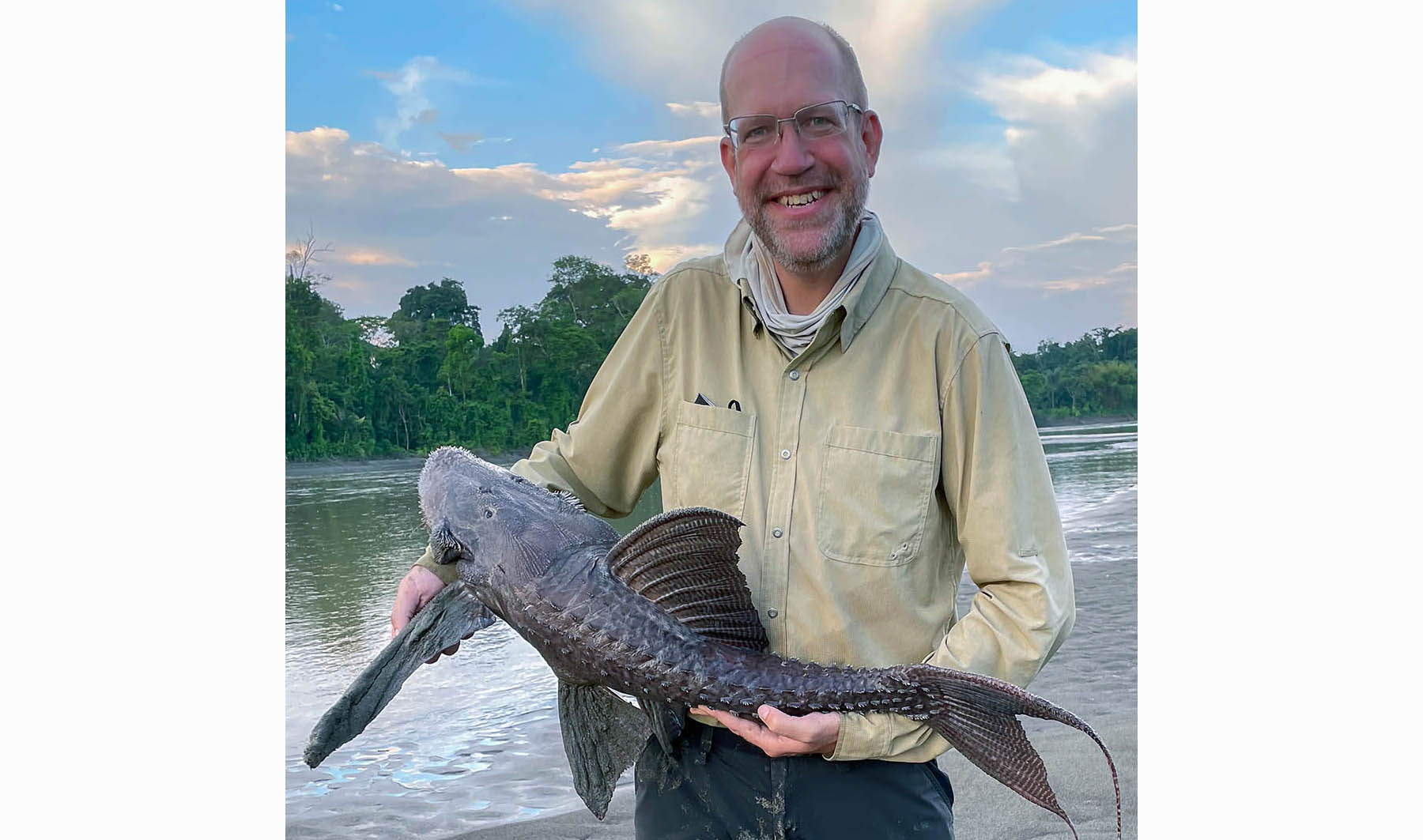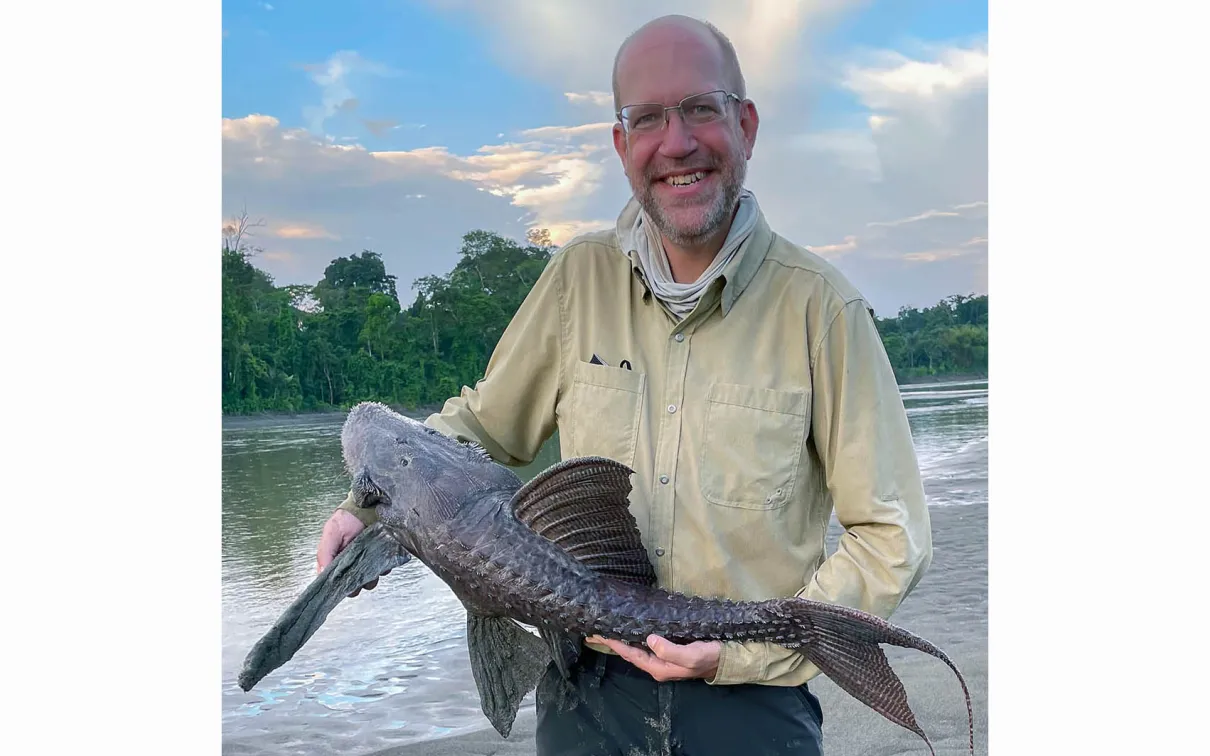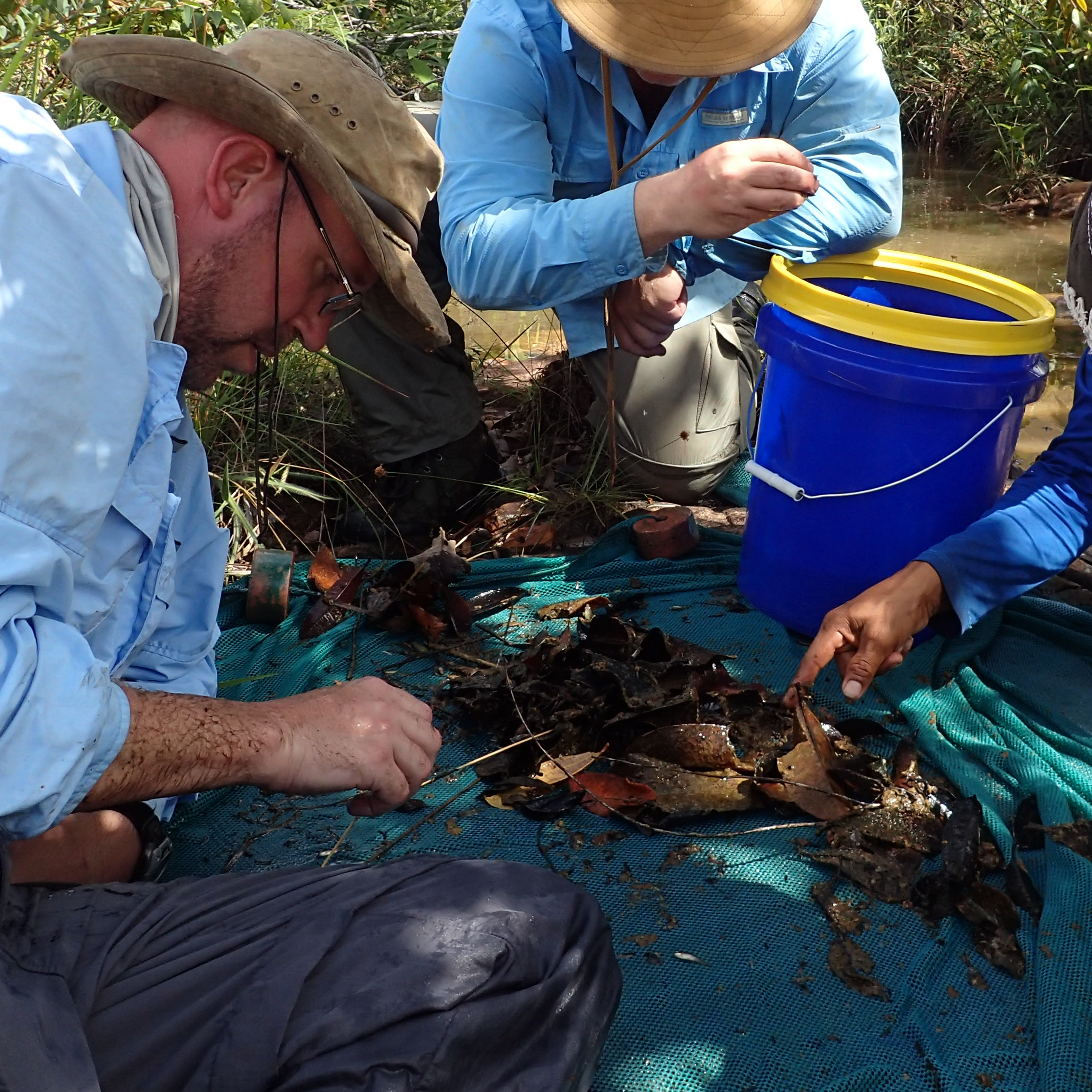Introducing ROM’s New Curator of Fishes
Nathan Lujan on biodiversity, swimming with piranhas, and naming a species after his mom.
Published
Categories
Author

Dr. Nathan Lujan, ROM’s new Curator of Fishes
Dr. Nathan Lujan, ROM’s new Curator of Fishes, is a genuine adventurer scientist, the kind of man who spends a month in the Amazon, then returns home laden with new specimens and, much to his wife’s chagrin, parasitic infections. But when we caught up over video chat, he was immersed in a different kind of muddy waters: expedition logistics.
This upcoming expedition is to a remote area between Guyana and Suriname, home to pristine ecosystems teeming with fish. But simply getting there—and getting permission to do the work—requires a lot of planning and permits. Still, Dr. Lujan remained upbeat, talking enthusiastically about his childhood, biodiversity, and the thrill of discovery.
CF: Your love of adventuring for fish goes back to boyhood. Tell me about “creeking” in Nashville and first falling in love with nature.
NL: Growing up in the suburbs of Nashville, Tennessee, I found myself in the epicentre of temperate freshwater fish diversity caught between two strong influences: a tropical fish store (the owner of which encouraged me and has continued to support my research ‘til today) and a stream near my house, where fishes, crayfishes, and insects lived. That fed my interest in North American fishes that has continued to today. And working in the fish store fed my curiosity about tropical fishes and undescribed diversity.
I had the opportunity in graduate school to embrace that interest in tropical diversity and start doing expeditions, using rivers as ways to access new worlds. In the Guiana Shield, an ancient geological formation with these tabletop mountains, the rivers lead up to waterfalls. And above the waterfalls are undiscovered species very much like Sir Arthur Conan Doyle's The Lost World, where adventurers go and find dinosaurs. Well, we didn't find dinosaurs, but we did find these ancient fish that have been isolated by the geologic process of uplift. So that desire to discover, to put those discoveries into a broader context, has been a motivation throughout my career.
CF: As a researcher, you’ve made dozens of discoveries, including many species of catfish. What are you most proud of?
NL: They're all children and it's hard to pick one. But one that has a personal connection is a discovery I made in 2004 above Salto Tencua, the first major waterfall on the Ventuari River in Southern Venezuela. I had done a trip to the Ventuari in 2003 as a first-year Ph.D. student. We went maybe a quarter of the way up the river and collected lots of new species. And this was a river that was entirely undeveloped and had received very little attention by scientists. I really wanted to go further up, to go above Salto Tencua. So I planned an expedition for the next year. Despite weeks of fieldwork, we had really only one afternoon to spend sampling above this waterfall. And we got there, and everything was different than what we had collected below the river. It was all isolated new species. And one of those new species I ended up naming after my mother. My mom was born in the Netherlands, immigrated to North America at eight years old, and she was separated from her past, her family, and the story of her folks. This fish was very similar to that in an evolutionary sense.
CF: How did your mom feel about having a fish named after her?
NL: She was very proud. It was her Facebook photo for a long time.
As ROM’s Curator of Fishes
CF: As ROM’s Curator of Fishes, you oversee a collection of more than 1.5 million specimens. What’s your vision for this vast collection?
NL: To make it available for researchers. Collections such as this are the single most powerful tool for scientists to understand how the world is changing. These specimens are permanent records of biodiversity from all over the world. And so maintaining the quality of the collection and its availability to international researchers is of paramount importance. And then using the collection to address questions of environmental integrity here in Ontario and the Great Lakes. So trying to understand what is happening in the Great Lakes with respect to invasive species such as Asian carp with climate change, and how these impacts are changing the fish community relative to the collections that we have from decades to over a century ago.
CF: What kind of threats do you face in the field?
NL: At a local level, the thing in rivers that people are most scared of is stepping on a stingray, which can leave a really debilitating injury to your calf. So in habitats where stingrays live, like large beaches, we try to shuffle our feet to shoo the rays and not step on them. But outside Canada, I try to stay in the river. Whenever I'm hiking through the forest, there is a whole other set of threats: ants, biting insects, even plants covered in spines. So the general rule when walking through the forest is: Don't touch anything, then get back to the river as soon as possible.
The river is a relatively secure environment. I've been swimming with piranhas throughout my career, and I've only been bitten once. That was when I had a couple of hundred of them in a net that I was trying to clear, and one slipped out and took a dime-sized chunk out of my finger. But that was 17 years ago, and I haven't had a significant injury since.
CF: ROM curators are those rare public intellectuals who move between academia and the public sphere. Why does this kind of bridge-building matter?
NL: Curators are the most convinced of the importance of the collections that they build and oversee. But these collections are largely hidden to the public for logistical reasons. And so, one of the challenges that I think all museums face, and I feel acutely as a curator, is making the public aware of the work that I do and the collection does. We have a collection staff of five who remain busy, managing the collection and processing loans. The collection functions very much like a library. Each specimen is available for loan. It's searchable online, and researchers from around the world regularly request specimens or tissues, and those have to be boxed up, shipped, tracked, and ultimately reintegrated with the collection. That is the work of biodiversity science, of trying to understand life on Earth in all its multitudes.
As we face the biodiversity crisis and climate change, these collections are more important than ever, but they suffer from a lack of resources, in part because people aren't aware of the work that's done. When I've given people tours of the fish collection, they're really amazed. They find it mind-blowing that this fish library exists. So there is this logistical challenge of bridging that gap and educating people about the work we do.
Your writing is filled with allusions to film and literature
CF: Your writing is filled with allusions to film and literature, plus an almost boyish reverence for the wonder of nature. How important is storytelling to what you do?
NL: In everything that I do, I'm trying to tell a story. For people to care about anything, they have to relate to it in a narrative context. And so, when I'm trying to convey the importance of fish collections, I’m trying to find the stories of specimens in the collections that people can relate to.
CF: On that note, is there one final story you’d like to share?
NL: Rivers are transects across the landscape. They integrate not just fish life, but they serve as transportation, as sources of food, recreation, and spiritual inspiration for peoples. And so, there's this holistic story of rivers not just in South America, but around the world that isn't often told, how they change from a biodiversity, social, and hydrological perspective from their source to their mouth. I see my career as building to a point where I can tell this story and collaborate with other specialists—filmmakers, sociologists, anthropologists—to tell a very holistic story about rivers and why it's important that they remain healthy and free flowing, unimpeded by hydroelectric dams and major impacts. There's a hydroelectric boom throughout the tropics that threatens a lot of biodiversity. And now is the most urgent time to tell these stories.








